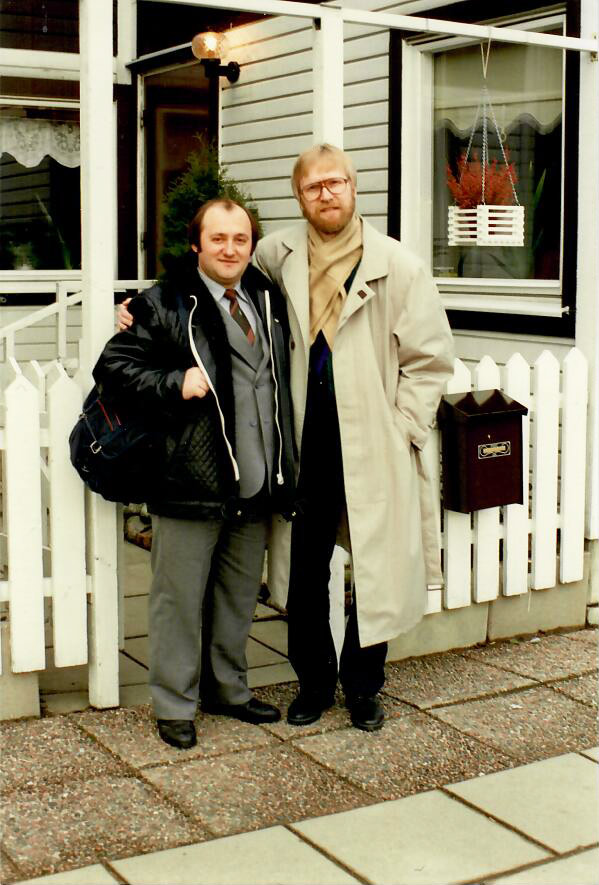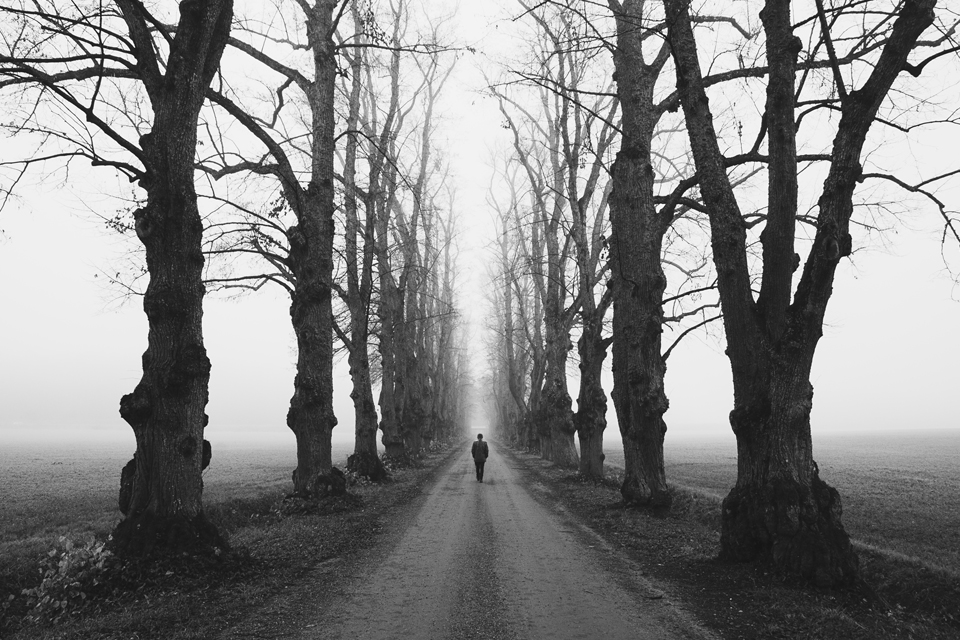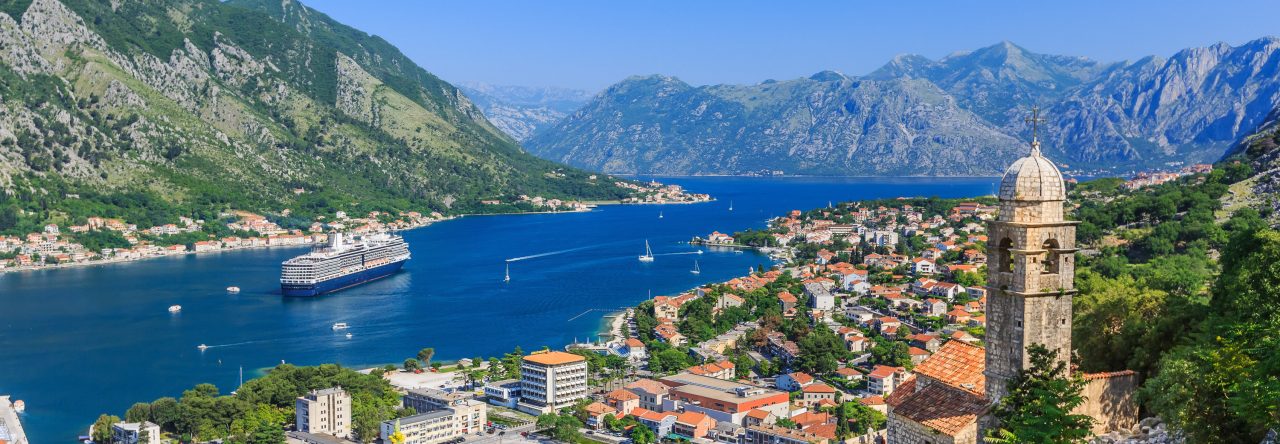My father was born in a big family – he had 10 brothers and sisters and only he alone survived in 1933. It was 90 years ago … so I have no blood relatives.

”In the case of the Holodomor, this was the first genocide that was methodically planned out and perpetrated by depriving very people who were producers of food of their nourishment (for survival). What is especially horrific is that the withholding of food was used as a weapon of genocide and that it was done in a region of the world known as the ‘breadbasket of Europe’.” – Prof. Andrea Graziosi, University of Naples.
An Introduction
In 1932 and 1933, millions of Ukrainians were killed in the Holodomor, a man-made famine engineered by the Soviet government of Joseph Stalin. The primary victims of the Holodomor (literally ”death inflicted by starvation”) were rural farmers and villagers, who made up roughly 80 percent of Ukraine’s population in the 1930s. While it is impossible to determine the precise number of victims of the Ukrainian genocide, most estimates by scholars range from roughly 3.5 million to 7 million (with some estimates going higher). The most detailed demographic studies estimate the death toll at 3.9 million. Historians agree that, as with other genocides, the precise number will never be known.
Through a study of the Holodomor (which has been referred to as the Great Famine), students can come to understand that the Holodomor is an example of how prejudice and a desire to dominate and control a particular ethnic group can lead to the misuse of power, mass oppression, and genocide.
Ukraine Before the Holodomor
Beginning in the 18th century, Ukrainian territories were divided between the Austrian and Russian Empires. In the aftermath of World War I and the overthrow of the Russian monarchy in February 1917, Ukraine set up a provisional government, declaring itself the independent Ukrainian People’s Republic in January 1918. The Ukrainian People’s Republic fought the Bolshevik Red Army for three years (1918-1921) but lost its fight for independence.
The bulk of Ukrainian territory was forcibly incorporated into the Soviet Union, or USSR (Union of Soviet Socialist Republics), and by 1922 Ukraine became the Ukrainian Soviet Socialist Republic (UkrSSR). Then the USSR sanctioned the requisition of all surplus agricultural products from the rural population, resulting in economic collapse.
Discontent among the farmers forced Lenin to halt the requisitions and bring in the New Economic Policy (NEP) in March of 1921. The NEP was intended to provide greater economic freedom and permit private enterprise, mainly for independent farms and small businesses. Beginning in 1923, the Soviet authorities also pursued a policy of indigenization, which in the Ukrainian SSR took the form of Ukrainization, a policy of national and cultural liberalization that promoted Ukrainian language use in education, mass media, and government. The goal for the introduction of both NEP and Ukrainization was to increase support for the Soviet regime in Ukraine. Video: Timothy Snyder: Ukrainian History as World History: 1917-2017
Causes of the Holodomor
By the end of the 1920s, Soviet leader Joseph Stalin consolidated his control over the Communist Party of the Soviet Union. Feeling threatened by Ukraine’s strengthening cultural autonomy, Stalin took measures to destroy the Ukrainian peasantry and the Ukrainian intellectual and cultural elites to prevent them from seeking independence for Ukraine.
To prevent ”Ukrainian national counterrevolution,” Stalin initiated mass-scale political repressions through widespread intimidation, arrests, and imprisonment. Thousands of Ukrainian intellectuals, church leaders, and Ukrainian Communist Party functionaries who had supported pro-Ukrainian policies were executed by the Soviet regime.

At the same time, Stalin decreed the First Five Year Plan, which included the collectivization of agriculture, effectively ending the NEP. Collectivization gave the Soviet state direct control over Ukraine’s rich agricultural resources and allowed the state to control the supply of grain for export. Grain exports would be used to fund the USSR’s transformation into an industrial power.
The majority of rural Ukrainians, who were independent small-scale or subsistence farmers, resisted collectivization. They were forced to surrender their land, livestock and farming tools, and work on government collective farms (kolhosps) as laborers. Historians have recorded about 4,000 local rebellions against collectivization, taxation, terror, and violence by Soviet authorities in the early 1930s. The Soviet secret police (GPU) and the Red Army ruthlessly suppressed these protests. Tens of thousands of farmers were arrested for participating in anti-Soviet activities, shot, or deported to labor camps.
The wealthy and successful farmers who opposed collectivization were labeled ”kulaks” by Soviet propaganda (”kulak” literally means ”a fist”). They were declared enemies of the state, to be eliminated as a class. The elimination of the so-called ”kulaks” was an integral part of collectivization. It served three purposes: as a warning to those who opposed collectivization, as a means to transfer confiscated land to the collective farms, and as a means to eliminate village leadership. Thus, the secret police and the militia brutally stripped ”kulaks” not only of their lands but also their homes and personal belongings, systematically deporting them to the far regions of the USSR or executing them.
These mass repressions, along with manipulation of state-controlled grain purchases and collectivization through the destruction of Ukrainian rural community life, set the stage for the total terror – a terror by hunger, the Holodomor.
The Holodomor
Ukraine, with its history of resistance to the Soviet rule, was a threat to the Soviet regime. Fearing that opposition to his policies in Ukraine could intensify and possibly lead to Ukraine’s secession from the Soviet Union, Stalin set unrealistically high grain procurement quotas. Those quotas were accompanied by other Draconian measures intended to wipe out a significant part of the Ukrainian nation.
In August of 1932, the decree of ”Five Stalks of Grain,” stated that anyone, even a child, caught taking any produce from a collective field, could be shot or imprisoned for stealing ”socialist property.” At the beginning of 1933, about 54,645 people were tried and sentenced; of those, 2,000 were executed.
As famine escalated, growing numbers of farmers left their villages in search of food outside of Ukraine. Directives sent by Stalin and Molotov (Stalin’s closest collaborator) in January of 1933 prevented them from leaving, effectively sealing the borders of Ukraine.
To further ensure that Ukrainian farmers did not leave their villages to seek food in the cities, the Soviet government started a system of internal passports, which were denied to farmers so they could not travel or obtain a train ticket without official permission. These same restrictions applied to the Kuban region of Russia, which borders Ukraine, and in which Ukrainians made up the largest portion of the Kuban population – 67 percent.
At the time of the Holodomor, over one-third of the villages in Ukraine were put on ”blacklists” for failing to meet grain quotas. Blacklisted villages were encircled by troops and residents were blockaded from leaving or receiving any supplies; it was essentially a collective death sentence.
To ensure these new laws were strictly enforced, groups of ”activists” organized by the Communist Party were dispatched to the countryside. As described by historian Clarence Manning:
”The work of these special ’commissions’ and ’brigades’ was marked by the utmost severity. They entered the villages and made the most thorough searches of the houses and barns of every peasant. They dug up the earth and broke into the walls of buildings and stoves in which the peasants tried to hide their last handfuls of food.”
To escape death by starvation, people in the villages ate anything that was edible: grass, acorns, even cats and dogs. Contemporary Soviet police archives contain descriptions of the immense suffering and despair of Ukrainian farmers, including instances of lawlessness, theft, lynching, and even cannibalism.
This Famine, the Holodomor, resulted in widespread deaths and mass graves dug across the countryside. The official registers did not give a full accounting of what was happening across Ukraine – deaths often remained unregistered, cause of death was missing – to conceal the true situation.
At the height of the Holodomor in June of 1933, Ukrainians were dying at a rate of 28,000 people per day. Around 3.9 million Ukrainians died during the Holodomor of 1932-33 (as established in a 2015 study by a team of demographers from the Ukrainian Institute of Demographic and Social Studies, and the University of North Carolina-Chapel Hill).

While Ukrainians were dying, the Soviet state extracted 4.27 million tons of grain from Ukraine in 1932, enough to feed at least 12 million people for an entire year. Soviet records show that in January of 1933, there were enough grain reserves in the USSR to feed well over 10 million people. The government could have organized famine relief and could have accepted help from outside of the USSR. Moscow rejected foreign aid and denounced those who offered it, instead exporting Ukraine’s grain and other foodstuffs abroad for cash.
Most historians, who have studied this period in Ukrainian history, have concluded that the Famine was deliberate and linked to a broader Soviet policy to subjugate the Ukrainian people. With the fall of the Soviet Union and the opening of Soviet government archives (including archives of the security services), researchers have been able to demonstrate that Soviet authorities undertook measures specifically in Ukraine with the knowledge that the result would be the deaths of millions of Ukrainians by starvation.
”The Terror-Famine of 1932-33 was a dual-purpose by-product of collectivization, designed to suppress Ukrainian nationalism and the most important concentration of prosperous peasants at one throw.” –Norman Davies, Europe, A History.
The Holodomor as Genocide
Raphael Lemkin (1900-1959), an expert in international criminal law (with a particular interest in the prevention of mass human extermination), who coined and promoted the term ”genocide,” identified the Holodomor as ”the classic example of Soviet genocide.”
Lemkin’s ideas on genocide served as the basis of the United Nations Convention on the Prevention and Punishment of Genocide in 1948. The Convention defines genocide as acts ”having intent to destroy, in whole or in part, a national, ethnic, racial or religious group, as such.”
In a speech given in 1953, as well as in articles written in the 1950s, Lemkin applied the term genocide to the Holodomor and the attempt to destroy the Ukrainian nation.
Lemkin identified four integral components in the genocidal process in Ukraine:
- The decimation of the Ukrainian national elites (political and cultural leaders),
- The destruction of the Ukrainian Autocephalous (independent) Orthodox Church (its clergy and hierarchy),
- The starvation of the Ukrainian farming population (the Holodomor), and
- Its replacement with non-Ukrainians from the RSFSR and elsewhere.
Leading historians and other scholars, such as James Mace, Robert Conquest, Timothy Snyder, Norman Naimark, Anne Applebaum, who have devoted significant time to studying the Holodomor and have published extensively on the subject have all concluded that it was genocide.
”Is the Ukrainian Holodomor genocide? Yes, in my view, it is. It meets the criteria of the law of genocide of 1948, the Convention – it meets the ideas that Raphael Lemkin laid down.” –Timothy Snyder (Richard C. Levin Professor of History at Yale University and a Permanent Fellow at the Institute for Human Sciences in Vienna), 15th Annual Arsham and Charlotte Ohanessian Lecture and Center for Holocaust and Genocide Studies Symposium.
For more information on reactions to the Holodomor as genocide, please refer to:
- Raphael Lemkin and the United Nations Convention on the Prevention and Punishment of the Crime of Genocide and the Soviet Genocide in Ukraine
- Historian Anne Applebaum Details Stalin’s War Against Ukraine: ’I Believe It Was Genocide’
- “I Will Remember Them,” a documentary about the Holodomor-genocide of 1932–33 produced by the Holodomor Museum
- The Ukrainian Holodomor of 1932-1933 as a Crime of Genocide: A Legal Assessment produced by the Ukrainian Institute of National Memory
Holodomor Denial
At the time of the Holodomor, the Soviet government and the Communist Party denied that a famine was taking place and refused any outside relief efforts. A succession of Soviet governments maintained formal denial that the Holodomor had occurred. In Ukraine, it was impossible to speak publicly, discuss openly, or teach about the Holodomor until the late 1980s. Information about the Famine was only available in the West, mostly from eyewitness testimonies of refugees who had survived the event and escaped from the Soviet Union after World War II.
Even today, authorities of the Russian Federation admit that there were famines in the 1930s in the USSR, but refuse to acknowledge the deliberate nature of the Famine in 1932–1933 in Ukraine.
In addition to Soviet denial at the time of the Holodomor, foreign journalists stationed in the USSR largely ignored it, while most governments, whose countries were going through the Great Depression, knew about it but did nothing. Journalist Walter Duranty of The New York Times, who was awarded a Pulitzer Prize for his articles about the USSR, wrote: ”There is no actual starvation or deaths from starvation, but there is widespread mortality from disease due to malnutrition… conditions are bad. But there is no famine.” Recently, Duranty was discredited for his cover-up of the Famine in Ukraine.
There were a few journalists who wrote about starvation in Ukraine, such as Gareth Jones, who wrote for the New York American and Los Angeles Examiner, and Malcolm Muggeridge, a British foreign correspondent. More on Holodomor Denial.
Legacy and Aftermath
The Holodomor ended in 1933. Collectivization was complete with all farmland becoming a socialist property and all farmers working for the state. According to recent demographic studies, 13.3 percent of Ukraine’s population died at the time of the Holodomor. In some regions of Ukraine, the percentage of deaths due to the Famine were higher; for example, the rate was 19 percent in Kyiv and 29 percent in Kharkiv oblasts. The Holodomor wiped out millions of Ukrainians. Promotion of a ’new Soviet identity’ and official pressure on Ukrainians to use the Russian language intensified. Even when the Holodomor ended, Ukrainians didn’t really stop suffering. The families of Holodomor victims feared hunger and further repressions for the rest of their lives, and this fear was passed onto future generations. They were soon to experience new traumas: Stalin’s purges of 1937-38, World War II, Nazi occupation and the Holocaust, and the 1946-47 famine.
Another consequence of the Holodomor in Ukraine was a loss of collective memory. In Soviet Ukraine, the Holodomor was kept out of official public discourse until shortly before Ukraine won its independence in 1991. We now know that explicit instructions were issued throughout the Soviet Union banning the use of the word famine, not only in party and military documents but also in medical records and statistical accounts. Irena Chalupa, the director of RFE/RL’s Ukrainian Service, stated:
”The creative engine of a people was destroyed, slowing down and distorting nation-building for decades. The Soviet regime prevented families and individuals from processing both personal and national grief. For more than 50 years, Ukraine could not address this trauma openly.”
In the 1980s, with the publication of the report of the US Commission on the Ukraine Famine and the findings of the International Commission of Inquiry into the 1932–33 Famine in Ukraine, as well as the release of an eye-opening documentary ”Harvest of Despair,” greater world attention finally came to bear on the Holodomor.
On November 28, 2006, the Verkhovna Rada (Parliament of Ukraine) passed a decree defining the Holodomor as a deliberate act of genocide. The Holodomor has been recognized as genocide by 16 nations and 22 US states, including Minnesota.
Suggestion for Educators
It is important that all students know about and understand some of the more important aspects of the Holodomor, the Ukrainian genocide. The Holodomor and other examples of genocide are of enduring significance to Americans and the world as a whole, because there are important lessons to be learned about human rights and responsibilities, oppression, and the challenge of democracy in multi-ethnic and multicultural societies.
Resources for teachers:
- Holodomor Research and Education Consortium (HREC) at the Canadian Institute of Ukrainian Studies, University of Alberta:
- Ukrainian Canadian Congress and the Ukrainian Canadian Research and Documentation Centre:
- For more information on the Holodomor:
- US Holodomor Committee: Holodomor Resources
- Connecticut Holodomor Awareness Committee: Information Links; Ukrainian Famine Genocide: classroom resources for teachers
- Ukrainian Research Institute, Harvard University: The MAPA Great Famine project
- Minnesota Holodomor Resources:
- Oral history project from the UMN Libraries’ Immigration History Research Center Archives (IHRCA) : Holodomor Impact on Minnesota’s Ukrainian Community
- Great Famine in Ukraine (1932-1933) and the Cost of Forgetting. Lecture by Dr. Paul Gavrilyuk, Aquinas Chair in Theology and Philosophy, University of St. Thomas.
*Much of the information for this guide was adapted from Valentina Kuryliw’s Holodomor in Ukraine, the Genocidal Famine 1932-1933: Learning Materials for Teachers and Students. Toronto: CIUS Press, 2018.
xxxxxxxxxxxxxxxxxxxxxxxxxxxxxxxxxxxxxxxxxxxxxxxxxxxxxxxxx
A candle of remembrance: Holodomor awareness month

November has been designated Holodomor Remembrance Month in Ukraine and each year commemorations are also held within Ukrainian communities around the world. Australia’s Ukrainian community also marks the ‘death by hunger’ of millions of men, women and children as an act of genocide perpetrated by the Soviet regime against the Ukrainian people.
In 1998 the President of Ukraine established the Holodomor Victims Day. It is observed every year on the fourth Saturday of November. The public is asked to light a candle in memory of the victims. On this day, as soon as the sun sets, Ukrainians light a candle and place it in their window in memory of all those killed by the artificial famine.
This November a petition has been circulating online to have the word ‘Holodomor’ included in major English language dictionaries. The petition is an initiative of Canada’s National Awareness Tour, a project of the Canada-Ukraine Foundation, supported by the Canadian government.
The term ‘Holodomor’ means ‘death by starvation’. It is based on two Ukrainian words: ‘holod’ meaning hunger or starvation; and the verb ‘moryty’ which means to induce suffering, to kill, to exterminate. The Holodomor refers to the artificially-created famine in Soviet Ukraine and the Ukrainian-populated Kuban region during the years 1932-1933.
The famine did not occur as a result of crop failure or natural causes such as drought. It was engineered through deliberate resolutions and laws of the Stalin regime: firstly, the confiscation of grain and all food in rural districts; and secondly, blockades and closed borders which did not allow the starving to leave their villages in search of food. Watchtowers were erected in the fields and manned by guards armed with shotguns. Those found to be hiding food inside their homes were executed. Peasants from Soviet Ukraine and the Kuban region who attempted to cross borders or checkpoints patrolled by armed troops were arrested and deported back to their place of residence or shot on sight. The Kuban region, which had previously been Ukrainian territory, was by then a part of Soviet Russia but it remained populated predominantly by ethnic Ukrainians.
The process had begun with Stalinist policies of imposing exorbitant and unattainable grain quotas. All grain was seized, down to the last seed. The so-called ‘Law of five ears of wheat’ made retaining even a handful of grain punishable by death, and those found doing so were to be shot unless there were extenuating circumstances, in which case they were to be imprisoned for not less than ten years. By imposing ‘fines-in-lieu’ on individual farmers and whole villages that had not been able to meet the inflated procurement quotas, Soviet authorities began taking livestock, other crops and all foodstuffs, in addition to grain. As a further punitive measure, a complete ban on retail trade in villages resulted in the immediate closure of stores and made it illegal for peasants to purchase any food or necessities (such as kerosene or matches) which would have helped them survive. The borders of Soviet Ukraine and the Kuban were closed and guarded by militia, to prevent starving peasants search for food in neighbouring regions of the USSR. The sale of tickets for transport by train or boat was banned. Peasants were prevented from entering urban districts and were expelled if they did so.
At the same time, the Stalin regime embarked on large-scale political repressions against Ukrainians. There were mass arrests of the spiritual and secular intelligentsia and “a wide-ranging attack on all Ukrainian cultural and intellectual centres and leaders …. Every conceivable cultural, academic and scientific organization was now purged.” (Robert Conquest).
Reputable historians agree as to the motive which lay behind the Holodomor. Norman Davies has written: “The Terror-Famine of 1932-33 was a dual-purpose by-product of collectivization, designed to suppress Ukrainian nationalism and the most important concentration of prosperous peasants at one throw.” James Mace maintained the famine was “designed as part of a campaign to destroy them [Ukrainians] as a political factor and as a social organism”. To quote Conquest again, “So the Ukraine now lay crushed: … its intellectuals shot or dying in labour camps, its peasants – the mass of the nation – slaughtered or subdued.”
The number of lives lost due to the Holodomor was first estimated to be 7 million, however, more recent research has raised this figure to 10 million. Records from the time do not necessarily reflect the full extent of the carnage. Those who attempted to accurately record the death toll were arrested and executed. The cause of death of starving people was often falsely recorded in official records as due to other medical conditions. Often the dead were not recorded at all, and death certificates ceased being issued.
As a result of the Holodomor, 20-25% of the population of Soviet Ukraine was exterminated. The child mortality rate was very high. In September 1933, in many regions up to two-thirds of Ukrainian pupils were recorded as missing from schools. (Alekseyenko et al). Such a demographic catastrophe would cripple Ukraine’s development as a nation for generations to come. James Mace, a leading expert on Soviet history, has said that the Holodomor “…maimed Ukraine to such an extent that it created a discontinuity in the normal development of the Ukrainian people….”.
The Soviet regime engaged in decades of denial and disinformation. No word about the famine was allowed to appear in the press or elsewhere; those who referred to it were subject to arrest for anti-Soviet propaganda with the punishment of five or more years in labour camps. At the time, the authorities denied that there was any famine at all. Eventually, when it could no longer be contradicted that Ukrainians were perishing from hunger, Soviet propaganda claimed the cause to be crop failures as a consequence of drought or farmer mismanagement. Denying the ethnic factor, authorities then falsely claimed that there was a famine across the USSR. In actual fact, grain was available in store in the famine area but was not released to the peasants, and the Soviet Union continued to export grain and agricultural produce throughout the duration of the Holodomor whilst tens of thousands of Ukrainian men, women and children died daily.
The Holodomor is now recognised as an act of genocide against the Ukrainian people, committed by the Soviet Communist regime. Stalin’s totalitarian regime deliberately created conditions for Ukrainians that could not sustain life. These conditions fully comply with the characteristics of genocide as defined by the United Nations. The Holodomor conforms to the definition of the crime according to the UN Convention on Genocide of 1948. It is understood that the Communist regime targeted Soviet Ukraine and Ukrainians as an ethnic group in Soviet Russia (in the Kuban region of the Northern Caucasus). James Mace wrote: “I remain convinced that for Stalin to have complete centralized power in his hands, he found it necessary to physically destroy the second-largest Soviet republic, meaning the annihilation of the Ukrainian peasantry, the Ukrainian intelligentsia, Ukrainian language, and history as understood by the people; to do away with Ukraine and things Ukrainian as such. The calculation was very simple, very primitive: no people, therefore, no separate country, and thus no problem. Such a policy is Genocide in the classic sense of the word.” In 2006 the Parliament of Ukraine passed a law declaring the Holodomor to be a genocide. Today 16 countries around the world, including Australia (as of 2008), formally recognise the Holodomor as an act of genocide of the Ukrainian people. In 2008 the European Parliament formally recognised the Holodomor as a crime against humanity.
In Soviet Ukraine, Holodomor was a traumatic memory which was suppressed: Soviet authorities denied it, survivors were afraid to acknowledge it. Meanwhile in Australia and elsewhere in the diaspora, Holodomor was a traumatic memory which was expressed; this expression was counter-hegemonic and functioned as a critical and subversive engagement with Ukraine’s past. In today’s (post-Soviet and sovereign) Ukraine, acknowledging Holodomor is part of a process of ‘de-communisation’ which acts as a counter-narrative to previous official discourse, which at first denied that any famine had occurred and then laid blame upon the victims (bad farming methods) or natural causes (such as drought). Today in Ukraine we see an institutionalisation of knowledge and memory of Holodomor through establishments such as the Holodomor Victims Memorial and the National Museum of the Holodomor-Genocide in Kyiv, as a necessary stage in the reclamation of history.
Another such act of institutionalisation would be the inclusion of the word ‘Holodomor’ in the world’s major dictionaries. As Peter Borisow argued more than a decade ago: “We should use ‘Holodomor’ as the stand-alone English word to name the unique genocide that was inflicted upon Ukrainians in 1932-1933 … In time, it will gain wide usage and acceptance in the English language, especially if we use it consistently and repeatedly and push for its inclusion in dictionaries and for its use in media and publications.” He further explained: “Although relatively new, ‘Holodomor’ is rapidly gaining usage and acceptance. This genuinely Ukrainian word joins the technical and emotional parts of the Ukrainian genocide. It is an accurate picture of what our genocide was like. ‘Holod’ means ‘hunger, starvation’. ‘Mor’ is more complex. Alone, it means ‘pestilence’, ‘plague’. The verb ‘mordovaty’ means ‘to excruciate’, ‘to torment or torture’… Holodomor thus carries with it the concept of premeditated, unrelenting, wide ranging and excruciating massive acts of torture and starvation. It was a plague of torture and starvation. This is how our families died. Not in a famine, but in a ‘Holodomor’.”
Dr Sonia Mycak
Research Fellow in the Centre for European Studies at the Australian National University
This paper was first published in English on 23 November 2020 on the website of the Centre for European Studies at the Australian National University.
Vladimir Franchuk
References
Alekseyenko, Anna and Taras Byk, Markiyan Datsyshyn, Volodymyr Hrytsutenko, Lubomyr Mysiv, Oleksandr Voroshylo. Holodomor: Ukrainian Genocide in the early 1930s. (Kyiv: The Ukrainian Institute of National Memory, nd).
Borisow, Peter. “1933. Genocide. Ten Million. Holodomor” in Canadian-American Slavic Studies, 37, No 3 (Fall 2003), special issue on “Holodomor: The Ukrainian Genocide 1932-1933” pp 1-6.
Conquest, Robert. The Harvest of Sorrow: Soviet Collectivization and the Terror-Famine. (London: Hutchinson, 1986).
Davies, Norman. Europe: A History (1996).
Mace, James E. “The Man-Made Famine of 1933 in Soviet Ukraine” in Famine in Ukraine 1932-1933 edited by Roman Serbyn and Bohdan Krawchenko (Edmonton: Canadian Institute of Ukrainian Studies, University of Alberta, 1986), pp 1-14.
Mace, James E. “I was chosen by your dead…Legacy of the Famine: Ukraine as a postgenocidal society” in Ukraine Incognita TOP 25 edited by Larysa Ivshyna (Kyiv: Newspaper Den/The Day, 2014), pp 311-317.
Verstiuk, Vladyslav and Volodymyr Tylishchak, Ihor Yukhnovsky. The Holodomor of 1932-1933: An act of Genocide against the Ukrainian People (Kyiv: The Ukrainian Institute of National Memory, Olena Teliha Publishing House, 2008).
ХХХХХХХХХХХХХХХХХХХХХХХХХ
Vladimir Franchuk is perhaps the most famous and respected Evangelical historian in Eurasia and has written many books about the history and life of Evangelical Christians and Churches during the Soviet period.
He has been in prison, because of his faith and knows the Slavic societies and their history from inside. He has traveled around the world, visiting conferences and meetings and is still a very popular speaker at International Conferences in the English and Slavic speaking world. His first official participation abroad was as a speaker on a workshop at the mission conference in Manila Philippines 1989.
We are blessed, that we can publish his article about Holodomor – The Ukrainian genoside. It is time for us to get to know the truth about the Ukrainian history.
R . Lehtonen

Roland Nelsson
Imponerande historieskrivning.
Gissar att få av oss kände till den.
Vi har ju hygglig kunskap om försöket att utrota det det Armeniska folket ett 20 tal år tidigare.